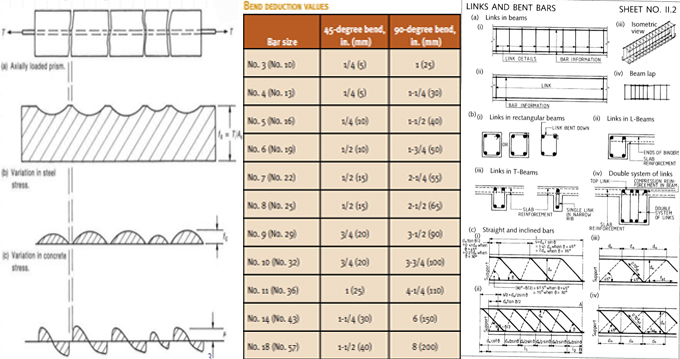
Detailed analysis of Reinforcement Bar Cutoffs and Bend Points
It is general practice to cut or bend prime reinforcement in beams and slabs where it is unnecessary. But tensile steel should always be continued correctly at the theoretical cutoff or bend points. It is essential to withstand tensile forces in the reinforcement via embedment apart from those points.
All reinforcement should be expanded apart from the point at which it is unnecessary to withstand flexure for a distance identical to the operative depth of the member or 12 bar diameters, whichever is higher exclusive of the supports of simple spans and at free end of a cantilever. Lesser extensions should be applied at supports of a simple span and at the free end of a cantilever.
Continuing reinforcement should contain an embedment length apart from the point where bent or terminated reinforcement is nonessential to withstand flexure. The embedment should be relatively long enough similar to the development length ld.
Flexural reinforcement is not stopped in a tension zone until one of the conditions given below is fulfilled:
1. Shear is under two-thirds which are generally allowed, along with allowance for shear reinforcement, if any.
2. Continuing bars deliver double the area necessary for flexure at the cutoff, and the shear does not surpass three-quarters of that allowed (No. 11 bar or smaller).
3. Stirrups surpassing those generally essential, are supplied each way from the cutoff for a distance identical to 75% of the operative depth of the member. Area and spacing of the leftover stirrups should be as below 
Where, Av denotes stirrup cross-sectional area, in2
bw denotes web width, in
S denotes stirrup spacing, in
fy denotes yield strength of stirrup steel, psi
Stirrup spacing should be under  , where
, where  stands for the ratio of the area of bars cut off to the whole area of tension bars at the section and d stands for the effective depth of the member.
stands for the ratio of the area of bars cut off to the whole area of tension bars at the section and d stands for the effective depth of the member.

Ref.: theconstructor.org
The location of theoretical cutoffs or bend points should be obtained from bending moments as the steel stresses are roughly symmetrical to them. The bars usually are not continued in groups or pairs. As for instance, for bending one-third of the bars, the theoretical bend-up point remains at the section where the bending moment remains two-thirds the maximum moment. The point is obtained analytically or graphically.

